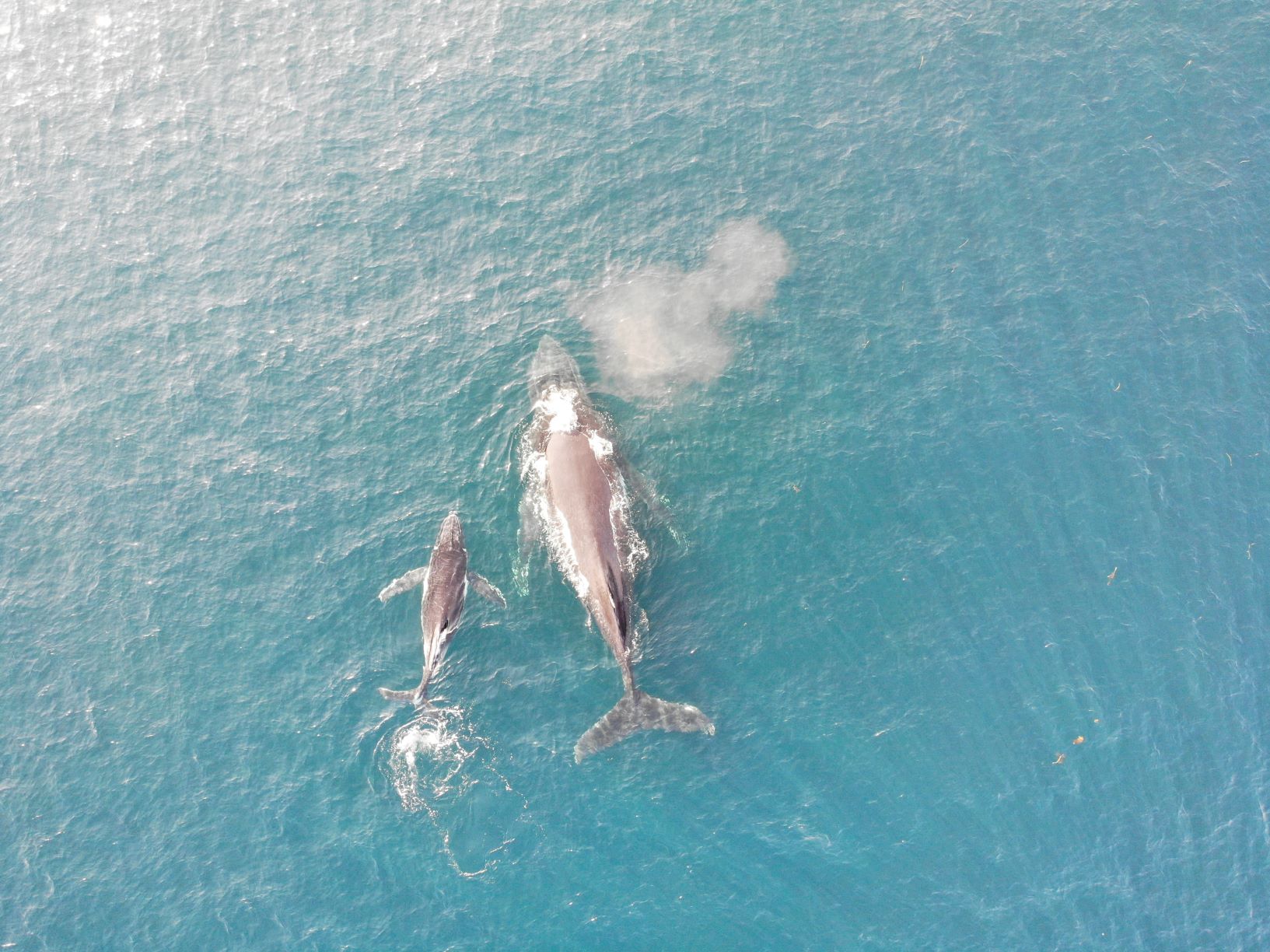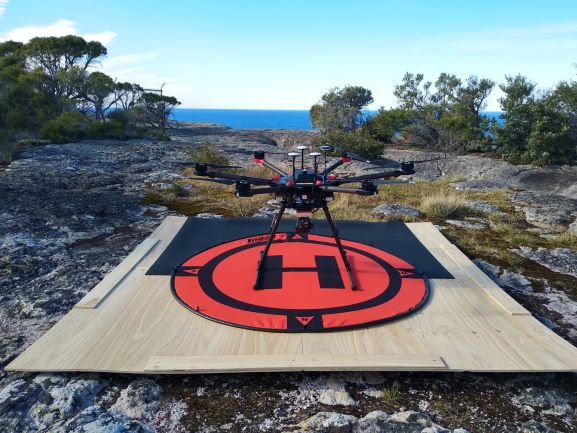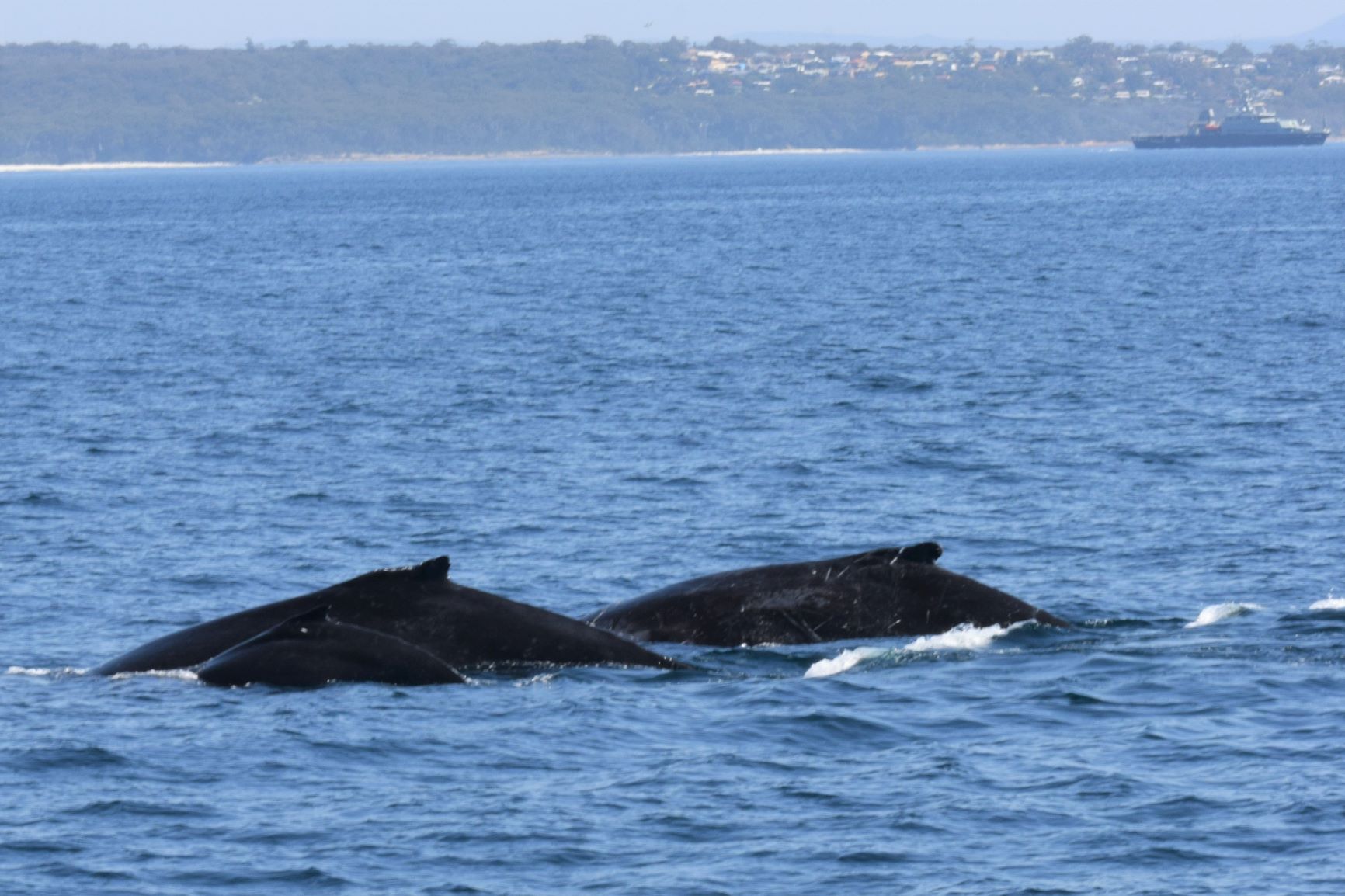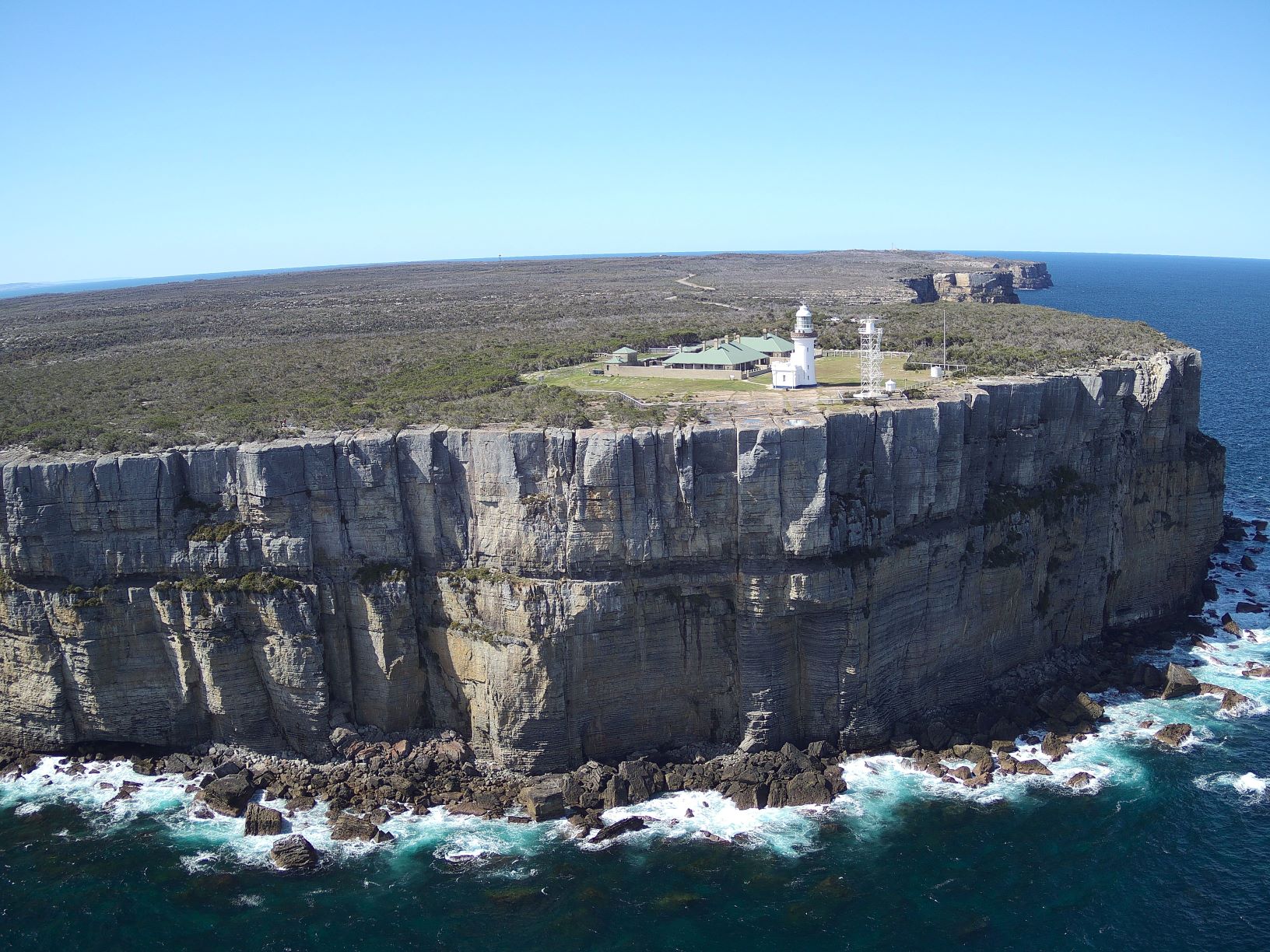CUAVA PhD student, Alex Jones, reports on her fieldwork in Jervis Bay studying whale migration.
At the end of 2019 I spent six weeks conducting my second fieldwork season. I am investigating the residency time, composition and movement patterns of humpback whale groups in Jervis Bay. I am also interested in evaluating the effectiveness of different UAV-deployed thermal sensors for detecting whales.
The fieldwork took place from late September – early November during the peak southern migration for mothers and calves. Dedicated theodolite surveys were conducted daily to track whale movements around Jervis Bay and to record the composition (e.g. mother and calf) of these groups. Photo-identification images, used to calculate the minimum residency time of whales in the Bay, were taken from a research vessel and off a local whale watching vessel. The thermal capabilities of two UAV platforms were tested; a DJI Matrice 600 Pro equipped with both a MicaSense RedEdge-MX Camera and a DJI infrared Zenmuse XT2 sensor was launched off the Point Perpendicular headland and a DJI Mavic 2 Enterprise Dual was launched off the research vessel.
There was a clear trend of humpback whale mother-calf groups being the predominant group type entering Jervis Bay. There were three mother-calf groups that stayed in the Bay for at least 24 hours and were identified over consecutive days. The calm and sheltered waters of Jervis Bay provide an area for mothers and calves to feed and rest before they travel further south to Antarctic summer feeding grounds.
Both UAV platforms were subject to various logistical issues (e.g. weather and limited flight time) but their thermal capabilities could still be tested. The DJI Matrice Pro effectively detected the thermal signature of humpback whales at distances over 500 m. The lower resolution DJI Mavic 2 Enterprise Dual was able to detect the thermal signature of cooler water reaching the surface following a whale diving but was not able to detect the whales warmer body temperature when they were on the surface.
My final field season will be completed this year.









